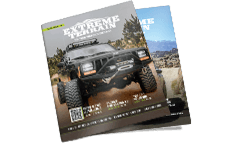
Extend the life of your Jeep XJ and its parts by simply maintaining the fluid levels in it.
Jeep Cherokee XJ Fluid Capacities and Type
How To Check Fluid Level
There are several key fluid reservoirs you should check on your Jeep Cherokee XJ. Most have easy-to-read lines on the reservoir or dipsticks, so you can check the levels of these fluids in just a few minutes:
- Engine oil
- Transmission fluid
- Coolant
- Brake fluid
- Power steering fluid
Check your engine oil by opening the hood and looking for the oil dipstick. It typically has a yellow handle and is labelled with oil near it. The dipstick pulls straight out and has marks on it to show safe oil levels.
Pull the dipstick out completely and wipe away the oil. Insert it again and then remove it to see the correct oil level. Top off your engine oil if the level is low and replace it if you notice discolored or contaminated oil. Remember to pick up an oil filter and other Jeep maintenance components you may need.
Check transmission fluid, brake fluid and power steering fluid using the same steps. These reservoirs all have the same safe range markings. Locate the correct reservoirs and look for signs of discolored fluids as you check the levels.
Check coolant levels by looking at the markings on the side of the coolant reservoir. You don’t have to remove the cap, but be cautious when checking while your Jeep is still hot.
Replacing Your Jeep Cherokee XJ Fluid
All of these fluids can be topped off if they’re running a little low. However, they should also be flushed and replaced periodically. Check your owner’s manual for estimated mileage rates for each of your fluids. Be sure to replace them regardless of age if you notice any contamination or excessive wear.
Replacing every fluid requires different steps, but the process is similar. For engine oil, park your Jeep on flat ground in a well-lit area. Wait until the engine and oil are fully cooled before beginning. Lift the front end using and place it securely on jack stands.
Position a used oil container beneath the oil pan. Wearing safety gear, carefully loosen the oil drain plug with a set of pliers. Allow the oil to fully drain into the pan before replacing the plug and replacing the oil filter. Lower your Jeep and fill up the oil reservoir with the recommended type and capacity of engine oil.
Be sure to review the specific steps of replacing other fluids to avoid dangerous situations. For example, draining and refilling brake lines requires you to press down on the brake pedal to force out any air in the lines as you fill. Failure to do so could compromise your brake performance.
Signs You Should Replace Your Jeep Cherokee XJ Fluid
Every fluid lubricates or powers components throughout your Jeep, so compromised fluids often have noticeable, serious consequences for the performance of your ride. Here are some common signs that it’s time to top off or fully replace a Jeep Cherokee XJ fluid:
- Unusual engine or transmission performance
- Slow braking
- Grinding noises or burning smells
- Dark, discolored, foul-smelling or contaminated fluids
Extend the life of your Jeep XJ and its parts by simply maintaining the fluid levels in it. Making a point of maintaining fluid levels can go a long way to preventing damage before it has a chance to occur. In the long run, you will pay less to maintain your XJ than you would if you had to repair a damaged part that could have been avoided.
Keeping the fluids at the proper levels will ensure that your Jeep continues to operate at peak performance, year after year. If you like to do the fluid service chores yourself (most are simple to do), then you will have to make sure you are getting the correct types of fluids for your year, make and model of XJ.
The provided chart will help you to easily access the information about the engine, transmission, transfer case, differential, and other service information for your XJ. While your owner’s manual can fine tune the process, our chart does make for a quick reference guide.
| DESCRIPTION |
TYPE |
CAPACITIES |
| 4.0L Engine Oil |
5W-30 |
6 Quarts / 5.7 Liters |
| 2.5L (AMC 150 CU) Engine Oil |
5W-30 |
4 Quarts / 3.8 Liters |
| 2.8L (GM V6) 1984-1986 Engine Oil |
5W-30 or 10W-30 |
4.5 Quarts / 4.2 Liters |
| 4.0L Coolant 1987-00 |
50/50 Mixture 3 Year Formula IAT (Inorganic Additive Technology) |
12 Quarts / 11.4 Liters |
| 4.0L Coolant 2001 |
50/50 Mixture 5 Year/100,000 Mile Formula HOAT (Hybrid Organic Additive Technology) or equivalent |
12 Quarts / 11.4 Liters |
| 2.5L (AMC 150 CU) Coolant |
50/50 Mixture 3 Year Formula IAT (Inorganic Additive Technology) |
10 Quarts / 9.5 Liters |
| 2.8L (GM V6) 1984-1986 Coolant |
50/50 Mixture 3 Year Formula IAT (Inorganic Additive Technology) |
12.2 Quarts / 11.5 Liters |
| AW4 4-Speed Automatic |
ATF+4 |
3.5 Quarts / 3.3 Liters (Service Fill) 8.2 Quarts / 8 Liters (Overhaul Fill) |
| 30RH 3-Speed Automatic |
ATF+4 |
3 Quarts / 2.8 Liters (Service Fill) 8.5 Quarts / 7.9 Liters (Overhaul Fill) |
| TF 904 3-Speed Automatic |
ATF+4 |
3 Quarts / 2.8 Liters (Service Fill) 8.5 Quarts / 8 Liters (Overhaul Fill) |
| Pugeot BA-10/5 |
75W-90 API Grade GL-5 Gear Lubricant or Equivalent |
2.5 Quarts / 2.4 Liters |
| AX-5 Manual |
75W-90 API Grade GL-5 Gear Lubricant or Equivalent |
3.5 Quarts / 3.3 Liters |
| AX-15 Manual |
75W-90 API Grade GL-5 Gear Lubricant or Equivalent |
3.3 Quarts / 3.15 Liters |
| NV3550 5-Speed Manual |
Mopar® Manual Transmission Lubricant |
2.4 Quarts / 2.2 Liters |
| NP231 Transfer Case |
ATF+4 |
1.6 Quarts / 1.5 Liter |
| NP207 Transfer Case |
ATF+4 |
1.1 Quarts / 1 Liter |
| NP228/229 Transfer Case |
ATF+4 |
2.9 Quarts / 2.8 Liters |
| NP242 Transfer Case |
ATF+4 |
1.1 Quarts / 1 Liter |
| Dana 30 - Front Axle |
80W-90 Gear and Axle Lubricant |
2.5 Pints / 1.2 Liters |
| Dana 35 Axle |
80W-90 Gear and Axle Lubricant |
3.5 Pints / 1.7 Liters |
| Chrysler 8.25 Rear Axle |
80W-90 Gear and Axle Lubricant |
4.4 Pints / 2.08 Liters |
| Dana 44 - Rear Axle |
80W-90 Gear and Axle Lubricant |
4 Pints / 1.89 Liters |
| |
*Limited-Slip (Trac-lok) Rear Axles require the addition of 118 ml (4 oz.) Limited Slip Additive |
|
| |
*75W140 Gear and Axle Lubricant Recommended For Towing |
|
| Brake Master Cylinder |
DOT 3 Brake Fluid |
As Required / To Full Mark |
| Clutch Master Cylinder |
DOT 3 Brake Fluid |
As Required / To Full Mark |
| Power Steering Reservoir |
Power Steering Fluid +4 (If unavailable ATF+4 is Acceptable) |
As Required / To Full Mark |




